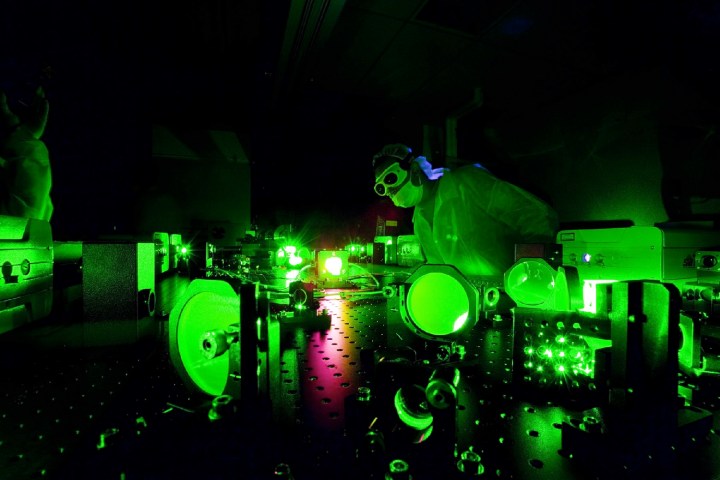
The Diocles laser will be used for studying the interactions of light with matter at the highest attainable field strengths. In the university’s test, it was fired at electrons suspended in helium to see how light scatters.
The “secret sauce” behind Diocles’ high power is a compression stage, during which the laser’s stretched, amplified pulse is compressed into an extremely short, powerful pulse. This pulse then hits a parabolic reflector which focuses it into a laser beam with, frankly, bonkers levels of intensity.
“We used [this] powerful laser to study one of the most basic interactions in nature: Scattering, and found that it changes dramatically when light has the highest brightness,” Professor Donald Umstadter, from the university’s Extreme Light Laboratory, told Digital Trends. “Because light scattering is essential to vision, it is also essential to life itself. Without it, day would look as dark as night. Normally, matter appears brighter as the brightness increases. However, as we turned up the brightness beyond a certain threshold, the appearance of matter changes as well. The scattered light has a different color and shape than the original light.”
While a super-powerful laser is cool enough, Umstadter said that Diocles does come with some pretty exciting real-world uses. These may include X-ray applications since the team has demonstrated that the scattered X-ray light makes it suitable for imaging with higher resolution and a 10-times lower radiation dose than from conventional sources.
And, just hypothetically, what would happen if it was accidentally shone in someone’s eye like those pranksters used to do with their laser pointers in high school?
“It is 20 orders of magnitude brighter than room light or sunlight on Earth,” Umstadter patiently explained. “It is also a billion times brighter than light at the surface of the sun. To be safe, we conduct the experiments from a separate control room.”
Between this, projects like the development of the world’s largest X-ray laser in Germany, and nifty applications like the use of lasers to test for food quality or zap underwater lice on moving fish, lasers are finally living up to the sci-fi potential we always knew they had!


